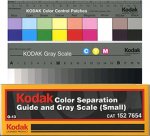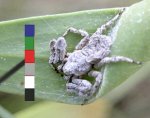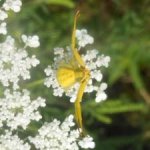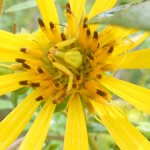hkellogg
Well-known member
Not sure where to post this but Color Management seemed the most logical.
I have a biologist friend that is doing research on the change of color of crab spiders measured from digital color images opened within Photoshop. I had suggested to use the RAW file format to eliminate the color conversion that would happen with the jpeg file format. He was interested in purchasing a Lytro camera that captures the complete light field and would allow adjustments to focus after the image was captured. However the Lytro camera will only export to .jpeg file format.
Do you think it would matter to measure color difference from a .jpeg image? Wouldn't the difference be relative to the color space? He is not trying to get the most accurate color from the images, just measure the difference.
The spiders are shy and move quite quickly so the ability to adjust focus after the fact would be a great advantage.
Thanks
I have a biologist friend that is doing research on the change of color of crab spiders measured from digital color images opened within Photoshop. I had suggested to use the RAW file format to eliminate the color conversion that would happen with the jpeg file format. He was interested in purchasing a Lytro camera that captures the complete light field and would allow adjustments to focus after the image was captured. However the Lytro camera will only export to .jpeg file format.
Do you think it would matter to measure color difference from a .jpeg image? Wouldn't the difference be relative to the color space? He is not trying to get the most accurate color from the images, just measure the difference.
The spiders are shy and move quite quickly so the ability to adjust focus after the fact would be a great advantage.
Thanks















